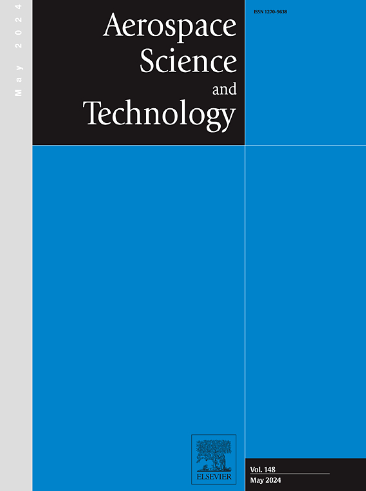Novel control of supersonic combustion instability via weakly coupled identical oscillators induced by multi-injector design
IF 5
1区 工程技术
Q1 ENGINEERING, AEROSPACE
引用次数: 0
Abstract
This study presents a passive control method for suppressing supersonic combustion instability by strategically modifying fuel injector arrangements. Experimental results show that conventional multi-injector configurations behave as weakly coupled identical oscillators, whose synchronization drives large-amplitude combustion oscillations. By implementing a staggered injector geometry to introduce controlled phase differences between oscillators, we achieve a 47.1 % reduction in pressure oscillation amplitude (from 40.1 % to 21.2 %) and a 53.6 % suppression of flame front oscillations (from 22.4 % to 10.4 %), while expanding the ignition boundary by 25 % (equivalence ratio reduced from 0.48 to 0.36). The control mechanism relies on periodic generation and migration of localized recirculation zones, establishing dynamically stable combustion regions. High-speed schlieren imaging and CH* chemiluminescence analysis confirm that the modified injector arrangement disrupts oscillator synchronization while improving fuel-air mixing. This approach provides combustion chamber designers with a new geometric degree of freedom for instability control, offering quantifiable performance benefits without requiring active systems. The findings, supported by coupled oscillator theory, are applicable to multi-injector propulsion systems including scramjets, gas turbines, and rocket engines.
利用多喷油器设计诱导的弱耦合同振控制超声速燃烧不稳定性
提出了一种通过调整喷油器布置来抑制超声速燃烧不稳定性的被动控制方法。实验结果表明,传统的多喷油器结构表现为弱耦合的相同振荡,其同步驱动了大振幅的燃烧振荡。通过采用交错的喷油器几何形状来控制振荡器之间的相位差,我们实现了47.1%的压力振荡幅度降低(从40.1%降至21.2%),53.6%的火焰前振荡抑制(从22.4%降至10.4%),同时将点火边界扩大了25%(等效比从0.48降至0.36)。控制机制依赖于局部再循环区的周期性生成和迁移,建立动态稳定的燃烧区域。高速纹影成像和CH*化学发光分析证实,改进的喷油器布置破坏了振荡器同步,同时改善了燃料-空气混合。这种方法为燃烧室设计人员提供了一种新的几何自由度来控制不稳定性,在不需要主动系统的情况下提供可量化的性能优势。该研究结果得到了耦合振荡器理论的支持,适用于包括超燃冲压发动机、燃气轮机和火箭发动机在内的多喷油器推进系统。
本文章由计算机程序翻译,如有差异,请以英文原文为准。
求助全文
约1分钟内获得全文
求助全文
来源期刊

Aerospace Science and Technology
工程技术-工程:宇航
CiteScore
10.30
自引率
28.60%
发文量
654
审稿时长
54 days
期刊介绍:
Aerospace Science and Technology publishes articles of outstanding scientific quality. Each article is reviewed by two referees. The journal welcomes papers from a wide range of countries. This journal publishes original papers, review articles and short communications related to all fields of aerospace research, fundamental and applied, potential applications of which are clearly related to:
• The design and the manufacture of aircraft, helicopters, missiles, launchers and satellites
• The control of their environment
• The study of various systems they are involved in, as supports or as targets.
Authors are invited to submit papers on new advances in the following topics to aerospace applications:
• Fluid dynamics
• Energetics and propulsion
• Materials and structures
• Flight mechanics
• Navigation, guidance and control
• Acoustics
• Optics
• Electromagnetism and radar
• Signal and image processing
• Information processing
• Data fusion
• Decision aid
• Human behaviour
• Robotics and intelligent systems
• Complex system engineering.
Etc.
 求助内容:
求助内容: 应助结果提醒方式:
应助结果提醒方式:


